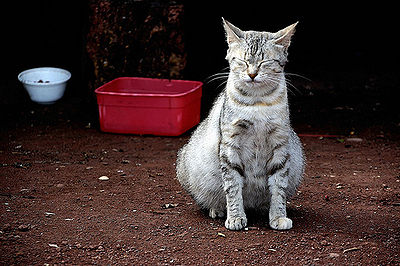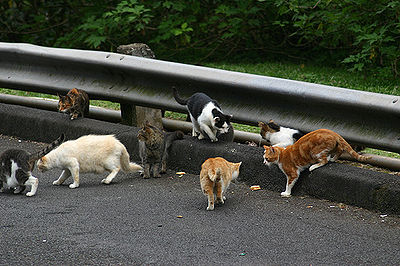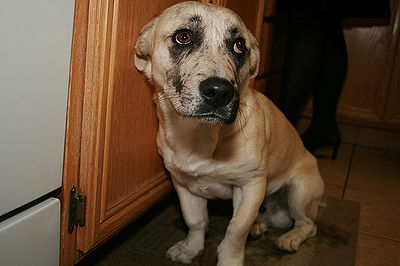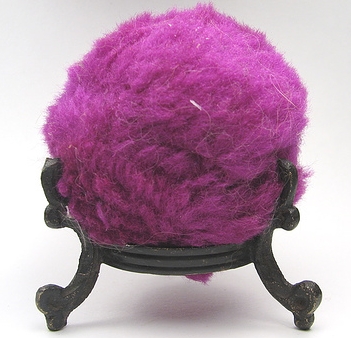
First signs of pregnancy in a cat occur about 3 weeks after mating.Gestation in cats is 9 weeks, about 65 days.
The number of kittens will determine how much the abdomen will become distended. During the last 3 weeks the kittens will put on much weight. If you’re unsure about the pregnancy it’s advisable for the vet to examine the about 4-5 weeks after mating.
Pregnant cats can lead perfectly normal lives, even climbing and jumping in safe places. Avoid giving any drugs or vaccines at this time as they can be harmful to the kittens.
A pregnant cat will require an increase in diet. She can continue to eat a high quality diet gradually increasing amounts until she is eating 25-50% more. The last 3-4 weeks, try giving your cat a high quality canned kitten food. Towards the end of the pregnancy (2-3 weeks before birth), a calcium supplement is recommended to avoid eclampsia, a life-threatening disease. Check with your vet. If constipation occurs, feeding oily fish such as tuna or sardines or a little milk should clear up the problem. You should also take take your cat to the vet for a general checkup. Keep the litter box clean to avoid possible infections.
If your cat is having difficulty cleaning her anal area, you can gently wash the area with a clean cloth in warm water. If your cat is long-haired, you may trim the hair around the genitals and the nipples.
Cats are very particular about where they give birth. You can encourage your cat to choose a convenient spot by placing boxes filled with newspaper in areas where she is most comfortable. The cover and front of the box should have openings for easy access.
Things to have ready are your vet‘s emergency telephone number, cat-safe antiseptic, clean towels, surgical scissors, cotton thread. As the time for giving birth approaches, you should keep your cat indoors or she may wander off outside and choose a birthing place that could be dangerous for the kittens.
At the onset of the first stage of labor, your cat’s breathing will be quicker and she may even make a purring sound. This stage can last for many hours. The room she will give birth in should be kept warm, about 72 degrees. You may see some vaginal discharge, clear at first, becoming somewhat bloody. If the discharge has a foul odor or there is profuse bleeding, notify your vet immediately.
When contractions begin, they can be an hour apart. At this point, it’s a good idea to let your vet know that birth is imminent. When the contractions reach about 30 seconds apart a kitten will be expelled within 15-30 minutes. It’s difficult to determine the length of time for a cat to birth her litter, sometimes taking longer than a day. When the kitten is born your cat will lick it breaking the sac and stimulating the kitten to breathe. She will use her teeth to cut the umbilical cord about an inch from the kitten’s body. The placenta usually appears at the next contraction and your cat will promptly eat it.
If your cat does not try to remove the sac, lift the kitten and gently remove the sac. Tie off the umbilical cord tightly with cotton thread and cut the cord with clean scissors about 1/4 inch beyond the thread. Rub the kitten with a clean towel to stimulate it. Return the kitten to the mother, close to her belly so the kitten can start feeding. If the mother cat still ignores the kitten, place it in a warm box with a hot water bottle wrapped in a blanket. Then place each kitten born in the same box. When the cat finishes giving birth you can return the box with the entire litter back to her. She will then begin to nurse the kittens.
While nursing, your cat will need more food. You can feed her a similar diet as the one while pregnant. Always check with your vet.



